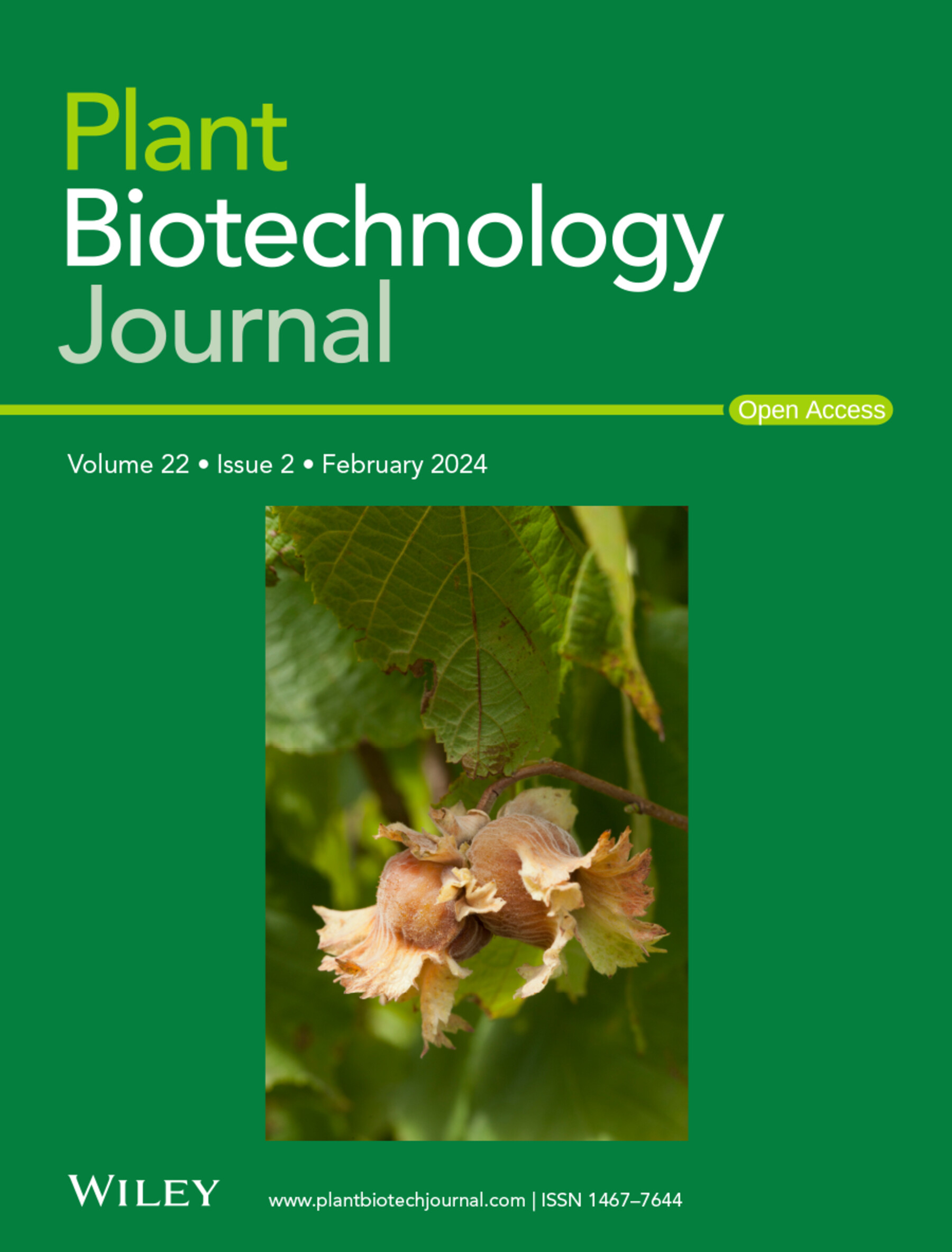Reduced content of gamma-aminobutyric acid enhances resistance to bacterial wilt disease in tomato
IF 10.1
1区 生物学
Q1 BIOTECHNOLOGY & APPLIED MICROBIOLOGY
引用次数: 0
Abstract
Bacteria within the Ralstonia solanacearum species complex cause devastating diseases in numerous crops, causing important losses in food production and industrial supply. Despite extensive efforts to enhance plant tolerance to disease caused by Ralstonia, efficient and sustainable approaches are still missing. Before, we found that Ralstonia promotes the production of gamma-aminobutyric acid (GABA) in plant cells; GABA can be used as a nutrient by Ralstonia to sustain the massive bacterial replication during plant colonization. In this work, we used CRISPR-Cas9-mediated genome editing to mutate SlGAD2, which encodes the major glutamate decarboxylase responsible for GABA production in tomato, a major crop affected by Ralstonia. The resulting Slgad2 mutant plants show reduced GABA content, and enhanced tolerance to bacterial wilt disease upon Ralstonia inoculation. Slgad2 mutant plants did not show altered susceptibility to other tested biotic and abiotic stresses, including drought and heat. Interestingly, Slgad2 mutant plants showed altered microbiome composition in roots and soil. We reveal a strategy to enhance plant resistance to Ralstonia by the manipulation of plant metabolism leading to an impairment of bacterial fitness. This approach could be particularly efficient in combination with other strategies based on the manipulation of the plant immune system, paving the way to a sustainable solution to Ralstonia in agricultural systems.降低γ -氨基丁酸含量可增强番茄对青枯病的抗性
茄枯菌属的细菌在许多作物中引起毁灭性的疾病,给粮食生产和工业供应造成重大损失。尽管为提高植物对Ralstonia引起的疾病的耐受性作出了广泛的努力,但仍然缺乏有效和可持续的方法。在此之前,我们发现Ralstonia促进植物细胞中γ -氨基丁酸(GABA)的产生;GABA可以作为Ralstonia在植物定植过程中维持大量细菌复制的营养物质。在这项工作中,我们使用crispr - cas9介导的基因组编辑来突变SlGAD2, SlGAD2编码番茄中负责GABA产生的主要谷氨酸脱羧酶,番茄是受Ralstonia影响的主要作物。Slgad2突变体植株在接种Ralstonia后GABA含量降低,对青枯病的耐受性增强。Slgad2突变株对其他生物和非生物胁迫(包括干旱和高温)的易感性没有变化。有趣的是,Slgad2突变体植物的根和土壤中微生物组成发生了变化。我们揭示了一种通过操纵植物代谢导致细菌适应性受损来增强植物对Ralstonia抗性的策略。这种方法与基于操纵植物免疫系统的其他策略结合起来可能特别有效,为农业系统中Ralstonia的可持续解决方案铺平了道路。
本文章由计算机程序翻译,如有差异,请以英文原文为准。
求助全文
约1分钟内获得全文
求助全文
来源期刊

Plant Biotechnology Journal
生物-生物工程与应用微生物
CiteScore
20.50
自引率
2.90%
发文量
201
审稿时长
1 months
期刊介绍:
Plant Biotechnology Journal aspires to publish original research and insightful reviews of high impact, authored by prominent researchers in applied plant science. The journal places a special emphasis on molecular plant sciences and their practical applications through plant biotechnology. Our goal is to establish a platform for showcasing significant advances in the field, encompassing curiosity-driven studies with potential applications, strategic research in plant biotechnology, scientific analysis of crucial issues for the beneficial utilization of plant sciences, and assessments of the performance of plant biotechnology products in practical applications.
 求助内容:
求助内容: 应助结果提醒方式:
应助结果提醒方式:


